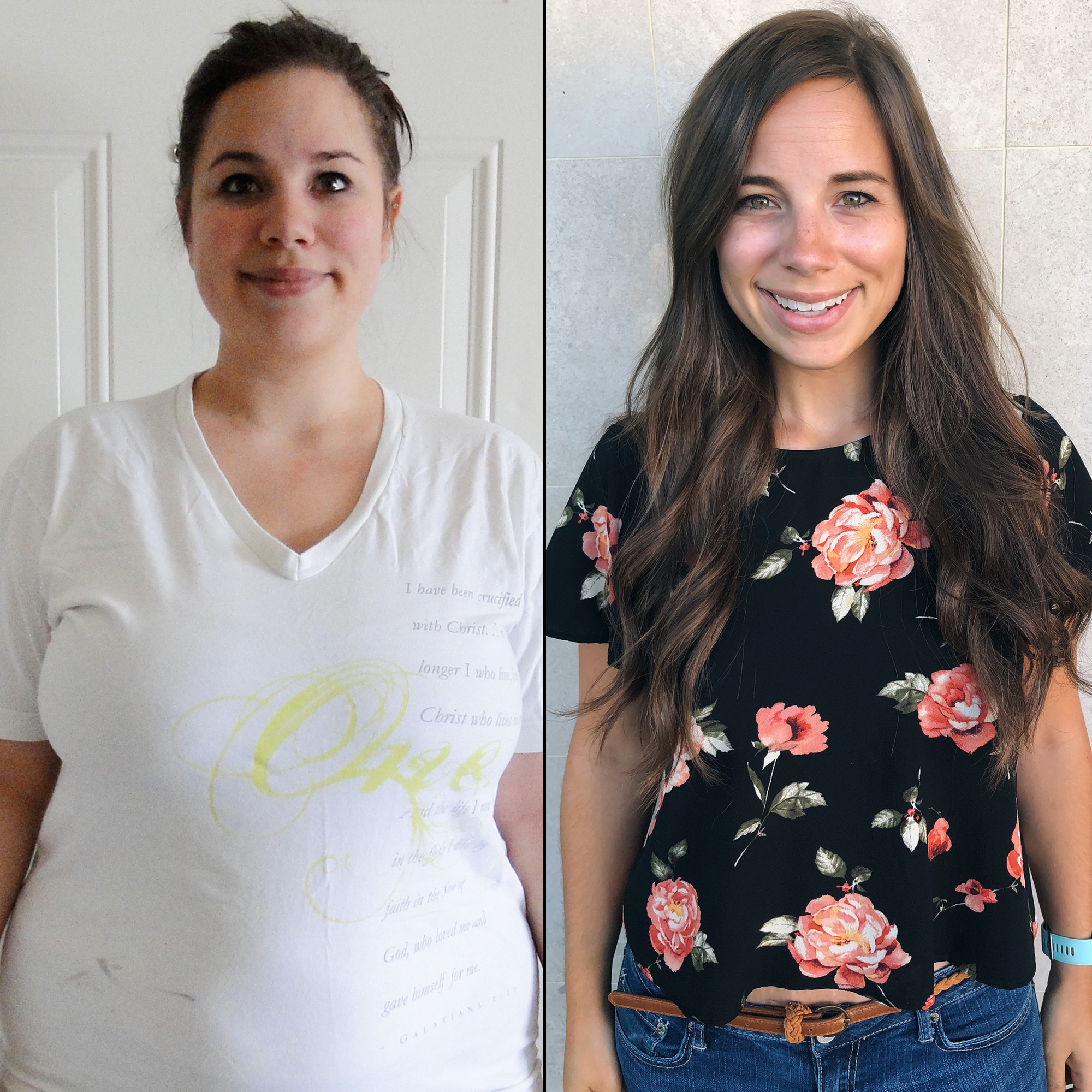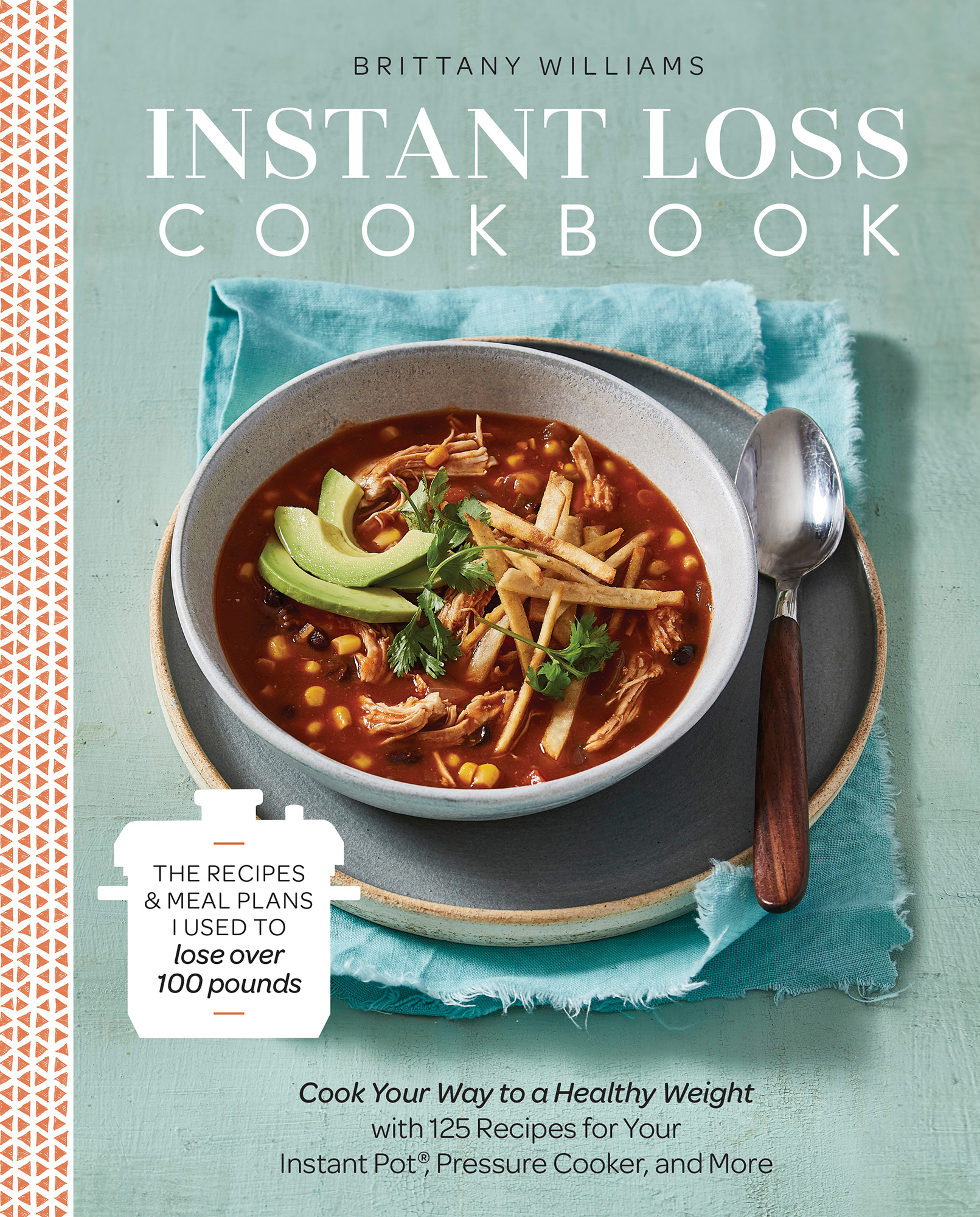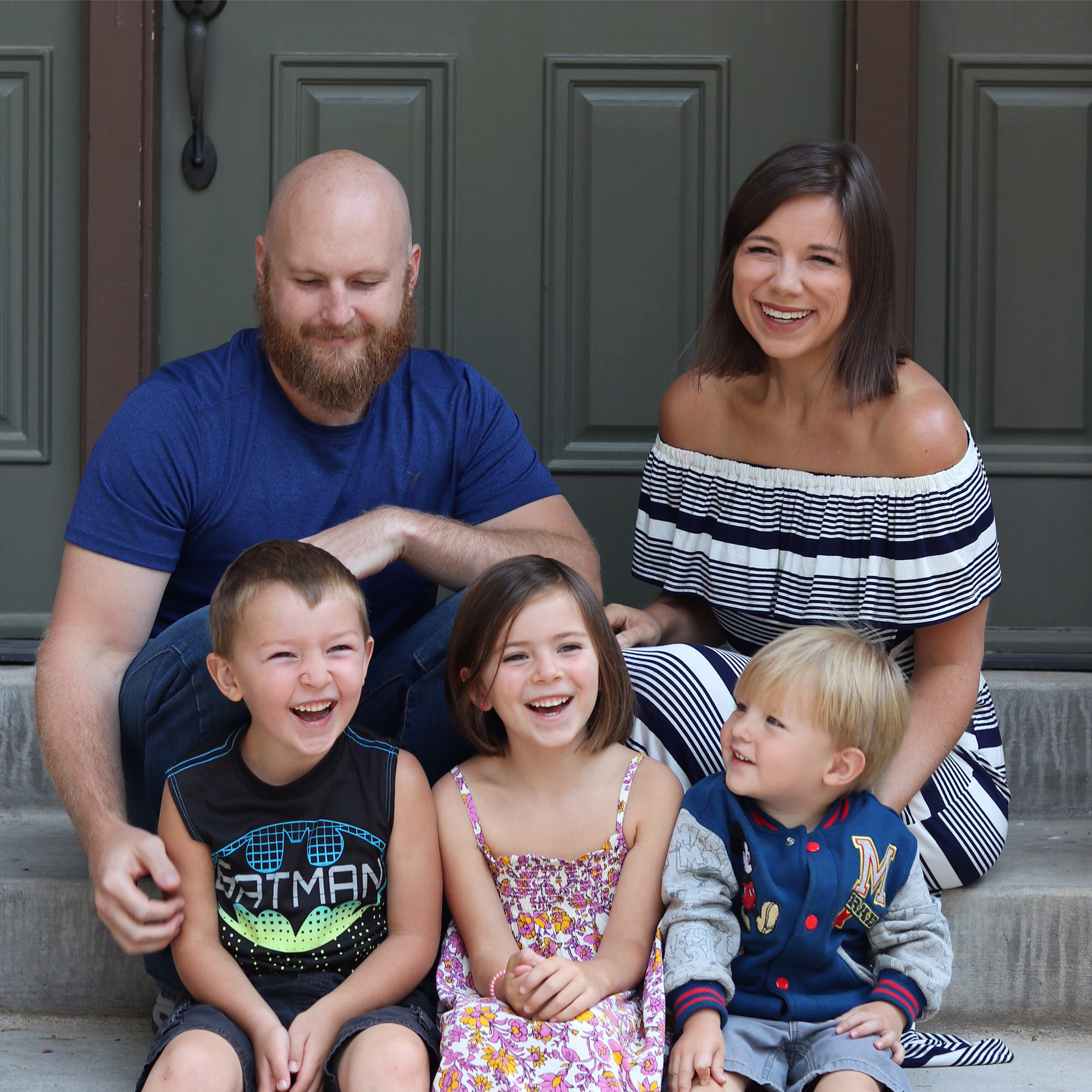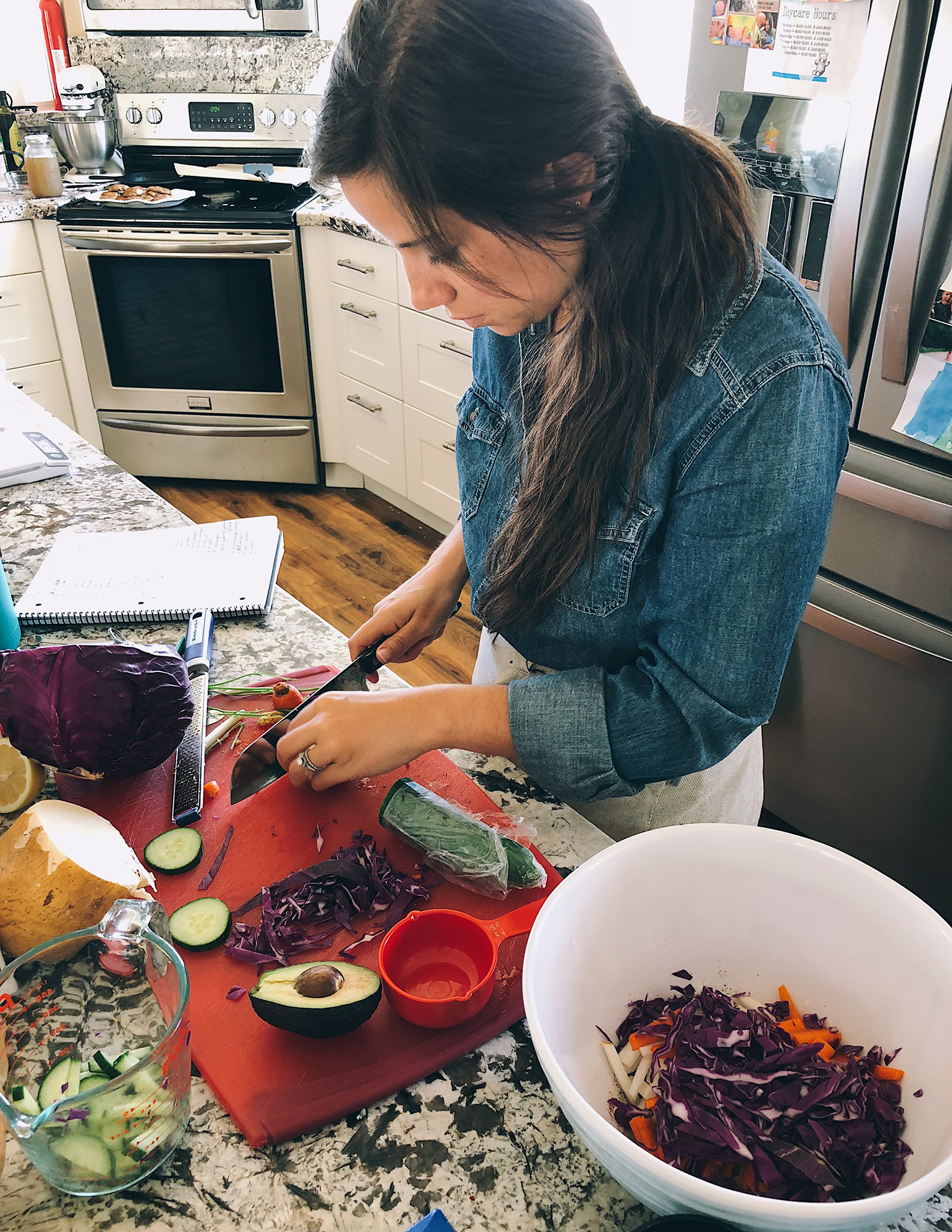At 260 pounds on New Year’s Day 2017, mother of three Brittany Williams made a resolution to treat her body better and eat healthier. She decided to ditch processed meals and turn to her Instant Pot to cook real food. Her goal wasn’t weight loss — yet by the end of the year, the number on the scale read 135 and Williams had lost 125 pounds — nearly half of her body weight!
Three months into her journey — and already down 46 pounds — members of an Instant Pot Facebook group began asking for her recipes. So she started her own Facebook group. “I picked up 20,000 followers in the first day,” she tells Us Weekly. That led her to start her website and Instagram, all of which turned into an instant phenomenon (get it?).
Now that her first cookbook, Instant Pot Cookbook: Cook Your Way to a Healthy Weight with 125+ Recipes for Your Instant Pot, Pressure Cooker and More, has hit shelves, the newly svelte 29-year-old opens up to Us about her journey — and shares her biggest rules for weight loss.
Change Your Mindset
The Texas native tells Us that she had tried to lose weight in the past with a variety of fad diets. But ironically, it wasn’t until she stopped thinking about weight loss that the pounds began to melt off. “When I started focusing on doing this for my body because it’s the best thing for my body long-term, when I had that switch in my mentality,” she says, “that’s when everything came together.” Williams’ “aha” moment came when she realized she had made over her kids’ diet (one daughter had been diagnosed with the inflammatory condition juvenile polyarticular arthritis, which she found was made worse by gluten and dairy), but wasn’t giving herself the same respect. “I thought, ‘How can I do this for them, but I’m not willing to do this for myself?’” she says. “It really convinced me that I wasn’t loving myself properly — not the way I loved my husband or my children. I would do anything to heal their bodies, but I didn’t extend that same love to myself.”
Clear Out Your Cabinets
Williams removed temptation. “The very first thing I did,” she says, “I went through the whole house and got rid of anything that could be a stumbling block for me.” For Williams, who knew portion control had always been a problem for her, that included items like organic tortilla chips. “They’re not that bad,” she says, “but I knew I would overeat them.” Next she went shopping for “fresh, delicious foods.” She already had an Instant Pot, so she turned to it as a time-saver and aimed to make herself and her family nutritious, home-cooked meals for the rest of the year.
Take Lots of Photos
It may sound superfluous, but Williams insists photos — and any method you can use to mark your body’s progress — will really help. “In the first month, I lost 19 pounds. The second, 11,” she says. “Seeing the progress and stepping on the scale and seeing that number go down was so encouraging.” But there were times in the journey where the number didn’t go down and Williams explains she had to trust herself. “I had to look for non-scale victories, like my pants feel looser,” she says. “And I recommend taking pictures. I was so happy I did. They kept me encouraged. I wish I took measurements too.”
Find Substitutes for Favorite Foods
“I grew up on chicken nuggets, French fries and mac and cheese,” says Williams, who now lives in southern California. Those habits carried over into adulthood, and she knew that completely cutting them out wasn’t an option. “I’m not a girl who can eat a steamed chicken breast and broccoli,” she declares. “Sure, you will you lose the weight. But is that a sustainable lifestyle for me? No.” So one of the first things she did was develop recipes that allowed her to have her old standbys without the ingredients, mainly dairy and gluten, that she had found were giving her trouble. (Williams notes that she had been diagnosed with hypothyroid disease at age 16 and was on medicine.) And so, her “Skinny Mac and No Cheese” and “Better Than Takeout Orange Chicken” recipes were born. Sometimes, all it took to turn an old favorite into a healthy new staple was an ingredient substitution or two: spices instead of breading or sweet potato instead of regular potato.
Try New Foods
While Williams had always thought she was a picky eater, what she discovered was that she was “a scared eater,” she says. “I didn’t know I liked certain foods because I didn’t try them. When I started trying things and gave it my best shot with an open mind, I would say, ‘Oh! This is really OK.’”
Know Yourself
From her years of fad diet failures, Williams knew counting calories wouldn’t work for her. “I needed to get away from calorie counting and MyFitnessPal,” she says. But have faith, she adds. “What happens with nutrient-dense food, when you have so much to lose, you don’t have to track your calories and macros. When your body isn’t used to having those nutrient-dense foods, it’s happy to have anything that’s nutritious.” She also started listening to her body. “I was looking for hunger cues, not eating until I was stuffed,” she explains. “I would sit back, assess and ask myself, ‘Am I really still hungry, or am I just eating because it tastes good?’” Williams credits making the switch to eat intuitively and trusting her body for the ability to maintain her weight for nearly two years: “It’s a lifestyle.”
Have a Plan of Action for Restaurants
For the first five or six months of her weight loss journey, Williams avoided restaurants. “I knew I wasn’t in the right frame of mind yet,” she says. Now, because she simply focuses on eating real food, it’s simple. “I’ll usually get a salad or a piece of protein with a vegetable side,” she says. “Everyone is so accommodating these days that it’s easy to find those things. I skip through the other stuff on the menu and go straight to the lighter section.” Another tip: Ask for a takeout box before you start eating so you can portion out your meal. Some restaurants, adds Williams, will even pack up half your meal in the kitchen before they bring it out to you if you ask. Eating at restaurants also helped Williams realize that plate size really matters! At home, she switched to smaller plates and bowls for her family’s meals.
Shake Up Your Eating Schedule
During a weight loss journey, you’ll inevitably hit at least one plateau. “I hit many, many plateaus,” the blogger admits. To power through them, she realized it helped to reverse her meal and have, for example, a veggie smoothie for dinner and a big meal for breakfast. “Just for a week or two until my body kicked out of that plateau, then I would go back to the regular way,” she adds. The flip-flop also helped Williams discover intermittent fasting. Now, “I’m a big, big fan,” she says. “I realized my body needed rest time. When I’m fasting, I give myself a 12-hour fasting window.” Typically that means she stops eating at 7 or 8 at night, then begins eating again at 8 or 9 in the morning. “I can always tell such a difference,” she says. “I have more energy and my body feels so much better.”
Make Friends With Your Body
Now, explains Williams, “my body is like a girlfriend to me. I look at her like, ‘OK I’m going to take care of you, and if I take care of you and nourish you, you’re going to take care of me by fighting off my hypothyroidism, and other diseases that may come my way.” That trust is key for both long-term health and weight maintenance, she notes: “It’s like teamwork with yourself.”
Want stories like these delivered straight to your phone?
Download the
Us Weekly iPhone app now!
Source: Read Full Article




